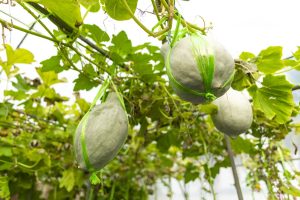TERREPLENISH® IS A COMMUNITY OF BACTERIA THAT LIVE & WORK TOGETHER, AS NATURE INTENDED

WHY USE TERREPLENISH® FOR FRUITS & VEGETABLES?
Terreplenish® is a OMRI-listed, USDA BioBased® certified product, and registered as a soil amendment with the California Department of Food & Agriculture (CDFA). Terreplenish® can be used for the most stringent organic food production, as well as on land that is being transitioned into healthier soil.
Using Terreplenish® for your fruits and vegetables will see a range of benefits, including
- Boosting plant health and quality
- Expanding the soil microbe populations and nitrogen availability.
- Eliminates disease control expenses.
- Reduces irrigation demands by increasing soil moisture.
Terreplenish® contains Azotobacter; an anaerobic, free-living soil bacteria that plays a key role in natures nitrogen cycle. Azotobacters bind atmospheric nitrogen, which is generally inaccessible to plants, and releases it in the form of ammonium ions into the soil creating nitrogen fixation.
Since 2012 Feed Earth Now & Senior Agronomist, Ron Doetch of Solutions in the Land, along with other third parties have completed validation trials on more than 100 different crops including:
Applying Terreplenish® requires no change in the normal process and is safe for exposure to people and pets immediately after application.
APPLICATION METHODS
- Fertigation
- Overhead irrigation
- Micro sprinklers
- Drip irrigation
- Drip tape
- Soil Drench
- Fogger - 500s micron or less

FOR PRE-PLANT APPLICATIONS:
Apply 7-10 days ahead of seeding.
FOR POST PLANT APPLICATION:
Apply after emergence. Apply in low sun. Foliar can be applied 2-3 times a week or every other watering.
BEST PRACTICES FOR FRUITS, VEGETABLES & FLOWERS:
Dilution recommendations are from 25:1 parts water to Terreplenish®.
Use clean water - no need for pH balance. Avoid foliar feeding in bright sunlight.
Once diluted, Terreplenish® becomes the same pH as the water. Application methods need to deliver the diluted Terreplenish® into the moist root zone to maximize efficiency.
Results
Terreplenish® Impacts on Plant Disease
POWDERY MILDEW. Foliar applied Terreplenish® has been proven to both prevent and treat many air-borne…
Terreplenish® Broccoli Production Trial
This broccoli production trial was designed to evaluate the efficacy of Terreplenish® as a foliar…
Field Studies on Vegetables
COOL-SEASON VEGETABLES: Beets, Broccoli, Brussels Sprouts, Cabbage, Carrot, Cauliflower, Celery, Garlic, Leek, Lettuce, Onion, Parsley,…
Field Studies on Fruit
Small Fruit Crops: Because small fruit plants are generally fast growing and maturing, available nitrogen…
Terreplenish® Grape Trial
In grapes, both soil and foliar applied Terreplenish® has been shown to be effective at…
Tomatoes Observations
Average growth 2.5 cm with Terreplenish®, without product 1 cm. 3/20/2020 foliage was noticeably a…
What Farmers Say About Terreplenish®
"We have harvested this first field of African Cucumbers. The product weighs more, is somewhat larger and tastes better. I am happy with this! We are making plans to foliar feed more fields next year."
— KATY WARREN, GOLD GREEN RANCH, DURHAM, CA
"We used Terreplenish® as a foliar spray on blueberries as well as many of my vegetable crops and immediately saw that a well-timed spray raised the brix of our plant sap by two degrees within 24 hours of application. This effect not only means increased sugar production but higher mineral levels in the leaf, which in turn makes the plants less susceptible to pest pressure. Case in point, raising the brix from 10-12 in leafy greens made them undesirable to flea beetles ... although they were present in the field, the flea beetles didn't touch the Terreplenish® treated leaves.
— JASON BERRY, BLUEBERRY FARMS OF GEORGIA/SUNNYRIDGE FARM









